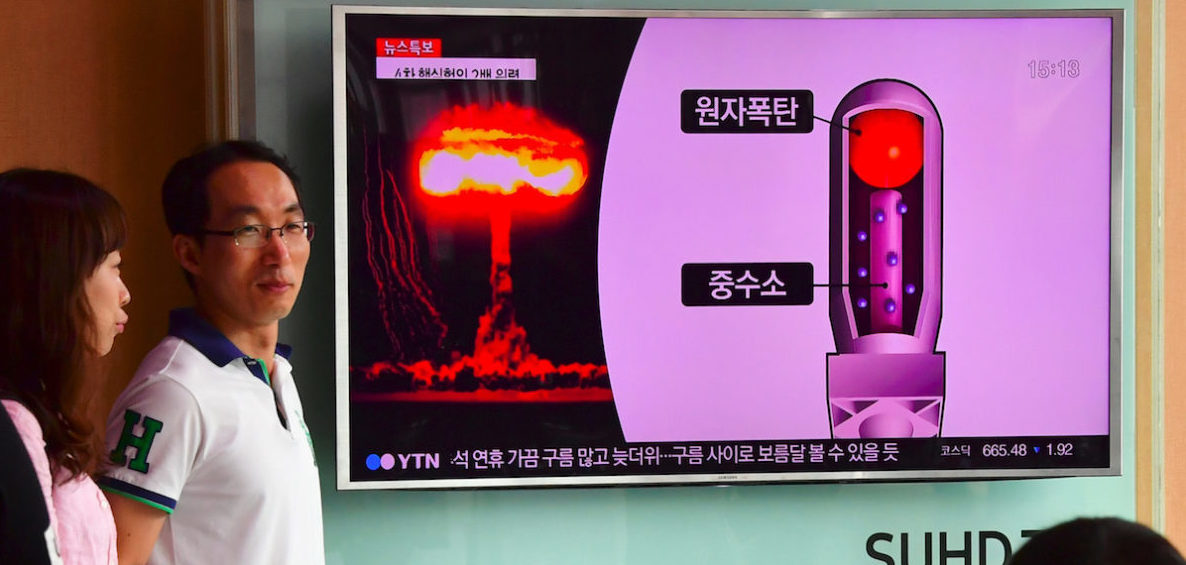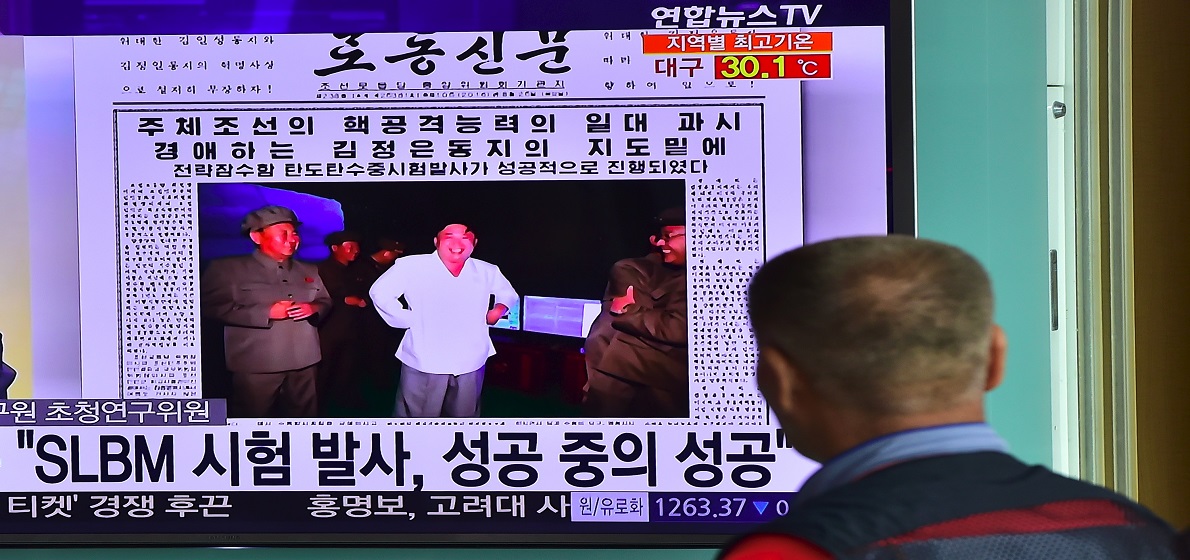
Why North Korea’s Fifth Nuclear Test is Not Like the Others
At around 10 kilotons, North Korea’s September 9 nuclear test reportedly marks its largest yet. It was also the third such detonation under Kim Jong-un (fifth overall), and the second this year. Those details do not meaningfully distinguish it from its past four nuclear detonations, however.
This fifth test is significant because it reaffirms an undeniable sea change in how we should read North Korean intentions, and what we need to do as a result. In word and deed, Kim Jong-un has made plain that North Korea seeks a nuclear deterrent posture sufficient to secure the regime’s survival, by credibly threatening a nuclear conflict if the alliance attempts invasion or regime change. Neither sanctions nor inducements will lead North Korea to voluntarily abandon a nuclear capability that it increasingly perceives as a strategic asset.
What It Means
For decades, Korea watchers debated the motivations behind North Korea’s pursuit of nuclear weapons. Was it driven by the search for political recognition and an elevated status as the “legitimate” Korea? Was the nuclear program a bargaining chip to trade away for economic aid or the removal of sanctions? Or was it a purely defensive tactic intended to buttress what had become, by the 1990s, a minimalist strategy of survival?
These questions have become irrelevant for policy purposes. It is entirely plausible—even likely—that North Korea’s nuclear intentions have evolved over time. Amid a dramatic country-wide famine and an unprecedented leadership transition in the 1990s, North Korea’s policy emphasis did shift from unification through revolution to the more modest goal of regime survival. Added to this domestic tumult were perceptions of isolation after its former Russian and Chinese patrons seemingly abandoned it in favor of thawing long-frozen relations with South Korea at the end of the Cold War. Against such a backdrop, a nuclear weapons program arguably bolstered the goal of regime survival: Either the international community would capitulate to North Korean preferences to keep it nuclear-free, or the latter would eventually obtain the ability to impose unacceptable costs on any attempt at regime change. Both outcomes were fine by North Korea, and it regrettably has gone down the latter path.
Today, strong mechanisms of path dependency have taken hold. North Korea’s cumulative nuclear decision-making has incurred high costs, in a conventional military sense (diverting resources from the KPA), in a domestic political sense (diverting resources from the economy and linking nuclear status with domestic legitimacy), and internationally (accepting the price of sanctions and isolation). And yet North Korea has built up an industry around the goal of an operational nuclear arsenal, and its tests are publicly celebrated as a source of national pride. We cannot reasonably expect that North Korea would be willing to absorb such high ongoing costs unless it saw a long-term benefit that outweighed them—insurance for the regime outweighs all these costs.
But what will North Korea do with its emergent nuclear capability? I have argued elsewhere that under Kim Jong-un, North Korea has begun racing toward the nuclear finish line; it seeks an “assured retaliation” nuclear posture that ensures any attempt to decapitate its nuclear capability with preventive strikes will all but guarantee nuclear war. This purpose helps account for what would otherwise be a major puzzle: why North Korea only conducted 26 missile tests and two nuclear tests in 18 years under Kim Jong-il, yet in the last four years under Kim Jong-un has already conducted 49 missile tests and three nuclear tests. Even more affirming of this “assured retaliation” trajectory is the diversity of North Korea’s testing, which includes rockets, short-range, medium-range, and intercontinental ballistic missiles, as well as launches from fixed sites, road-mobile launchers, and submarines. Investing in greater diversity is costly, but it makes for a more secure/assured nuclear posture.

In the meantime, however, the Korean Peninsula is entering a newly dangerous phase. Until it has a clearly recognizable assured retaliation capability, North Korea’s de facto nuclear posture is what Vipin Narang would describe as “asymmetric escalation”—that is, a posture that contemplates nuclear first-use as a de-escalatory measure during crises or conflict. As a consequence, over the next several years, the likelihood of nuclear conflict in Korea will become dramatically higher than in the past.
What (Not) to Do
The primary axis of debate among Korea watchers has historically been about the merits of sanctions versus engagement. North Korea’s behavior over time has largely mooted that debate. There is no evidence that any amount of sanctions on North Korea will have the effect they did on Iran (of driving it to the negotiating table), in part because North Korea already has nuclear weapons, and preventing nuclear obtainment is logically much easier than compelling abandonment of such an asset. At the same time, the Obama administration has, to no avail, attempted and continues to remain open to any and all modes of engagement with North Korea that could plausibly reduce the nuclear temperature on the Peninsula. North Korean diplomats might be interested in denuclearization talks but the regime is not.
As I describe in my recent book, as long as the alliance maintains an adversarial relationship with North Korea, then policy must be guided by a logic of deterrence. While engagement and sanctions are both compatible with a deterrence logic, if there is no prospect to ameliorate the rivalry (and it appears that there is not), then more must be done to bring policy into conformity with such a logic. Several steps for adaptation follow.
First, the alliance and the international community must acknowledge that sanctions and other forms of “cost imposition” in response to North Korean testing serve the purpose of reinforcing the nuclear taboo but will not change the current path.
Second, strategic messaging should move away from statements that North Korean testing is “totally unacceptable” when there is nothing short of violence that can be done to stop testing. A better alternative for public diplomacy is to underscore: the high economic cost of North Korea’s continuing down this path; that testing burns through its limited plutonium stockpile, which is self-defeating; and that the real “totally unacceptable” action is violence against the United States or its allies.
Third, the alliance must not allow a replay of the violence in 2010; if the alliance is attacked, even in small or deniable ways, swift and concentrated retaliation must follow. North Korea should no longer be given the benefit of the doubt in cases of ambiguity about attribution. I have elsewhere written at length about the alliance’s misplaced fear of escalation in response to North Korean violence. Deterrence demands risk-taking.

Finally, the U.S. military presence in South Korea must adapt to prevail in limited scope military campaigns without significant reinforcements. North Korean nuclear weapons make total war and forced regime change impractical, and any signaling toward North Korea that implies either of those eventualities is irresponsible. So instead of viewing U.S. Forces Korea (USFK) as a “tripwire” that activates the flow of large-scale reinforcements to the Peninsula, the forces already resident in Korea need to be optimized to secure political-military objectives on their own as a way of better controlling inadvertent signaling and escalation. Viewing USFK in this way should dramatically change the composition of the forces in and around the Korean Peninsula to emphasize things like amphibious forces, stealth fighters, minesweepers, and conventional precision munitions. These capabilities can perform deterrence and defense missions without necessarily triggering World War III.
North Korea’s fifth nuclear test puts the world on notice: It is highly committed to developing strategic forces at all costs. We should take its word and deed on this matter seriously. The debate now facing the alliance and the international community is how, not whether, to adapt.![]()
